|
Cascadia is a lot of things to a lot of different people. Some people see Cascadia as just a bioregion while others envision
a republic or a commonwealth. Some see Cascadia as an ecological utopia waiting to awaken while others see Cascadia as one
clear-cut after another between petroleum driven suburbia and sprawling shopping malls. To anyone truly looking or experiencing
Cascadia knows that Cascadia is many things with many possiblities.
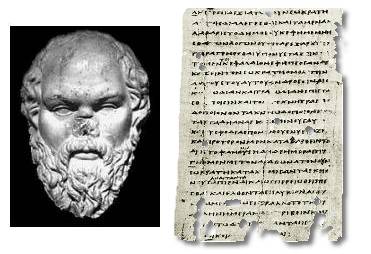
The issue of a republic or an autonomous political entity based a Western model has had a long history in the region.
The Western romanticization of a "republic" has a history that reaches back to ancient times. The word "republic" is from
the Latin "res publica" meaning "of the people". There has been a long established association that the idea of a republic
with the idea of democracy. But to confuse them as the same thing is an accident. Republics tend to be representational of
the people with the idea of the "best" interest of the people in mind. The problem often lays in "who are the people?" and
unfortunately that is often a selected group of people with power.
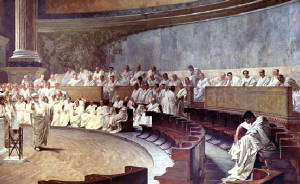
Often Western chauvinism neglects long traditions of various non-Western or even non-Anglo-French traditions of governmental
systems for example the Ongwanonsionni called Iroquois confederation in Anglo-American history or the oldest Western functioning
republic being the Althing of Iceland.
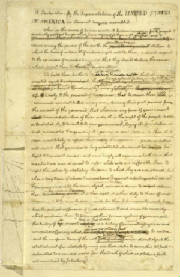
The US President Thomas Jefferson originally envisioned the land west of the Lousiana Purchase as a Republic of the Pacific.
In Jefferson's original vision this Republic of the Pacific or Pacific Republic was not to be part of the United States, but
eventually a great trading partner separate and exploring its own democratic experiment.
The British crown and the United States jointly occupied the Oregon Territory at first. A series of meetings in Champoeg
(just south of modern Wilsonville, Oregon) called the Wolf Meetings were arranged to focus on "vermin" and pests as well as
an inheritance case. The meetings eventually made US American settlers realize that their rights were not covered by any of
the judicial systems that protected British subjects and used for Native Peoples. The growing number of US American settlers
applied pressure to form a government that represented American citizens and protected their property. There was fear by non-US
citizens that US American settlers would push for territorial annexation to the United States. Non-US residents in the Oregon
Territory had lots of reasons to be concerned about US expansion with sentiments and rhetoric that publicly voicied anti-European
presence in the Western Hemisphere, racial chauvinism and plenty of examples of American expansionist policies using emigration
as a method. At the same time there was pressure by Hudson's Bay Company (the British representation in the region) to block
such a vote using French Canadian and British settlers in the region. In May of 1843 the European settlers in the Oregon Territory
created their first "western style" government as a Provisional Government. Several months later the Organic Act (5th of July
1843) was drawn up to create a legislature, an executive committee, a judicial system and a system of subscriptions to defray
expenses. Members of the ultra-American party insisted that the final lines of the Organic Act would be "until such time as
the USA extend their jurisdiction over us" to try to end the Oregon Territorial independence movement. George Abernethy was
elected its first and only Provisional Governor, but the opposing "party" led by Osborne Russell favored Independence. Russell
proposed that the Oregon Territory not join the United States, but instead become a Pacific Republic that stretched from the
Pacific Ocean to the Continental Divide. Many favored the idea of Independence (especially north of the Columbia River).
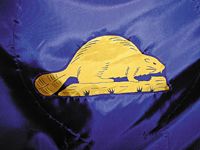
Meanwhile, even though two nations had assumed "custody" over the NW, the dream for a new country did not die. Three
men in the 1830's led the drive to make Oregon (which then included all areas which we think of as Cascadia) a new country,
which included Lansford Hastings, William Bennett and James Marshall. But as Americans continued to pour in, trouble erupted
which made not only Native Americans second class citizens, but also British, French and Canadians prone to similar treatment.
Having been overpowered by American influence, the three men fled to California. Interestingly enough, the three did play
major roles in California's history. Bennett was involved in the bear Flag Revolution and Marshall is credited with having
discovered gold while he supervised the construction of Sutter's Mill. Meanwhile, Hastings became the most notorious after
compiling the shoddy guidebook that doomed the Donner Party.
Still, even after Oregon became a U.S. state, elements among its population (and also in Northern California) sought
to break free of American rule to form their own country from the very beginning of Oregon's statehood. While the Southern
States broke free to form the Confederacy, they saw it as a perfect opportunity to do the same and gave new life to Jefferson's
original idea, by trying to establish a country under Jefferson's name: the Republic of the Pacific which soon began to spread
quickly in the physical region. Being at war with the confederacy and not being in a position to put the movement in the NorthWest
down by use of force, the American government launched a propaganda attack in 1861 to destroy the movement by trying to associate
the Pacific movement with a group called the Knights of The Golden Circle which was a pro-Confederate, pro-slavery organization.
Soon, the American government was able to whip the region back into line.
At the same time, other movements inside
of Cascadia, such as the Klamath movement, Trinity and Jackson movements all sought to wrench certain areas of Cascasdia free
from U.S. control. These too failed, largely by being put down through various uses of force.
But the dream refused
to die and was followed by yet another attempt to free Oregon from American rule in the 1890's.
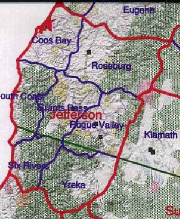
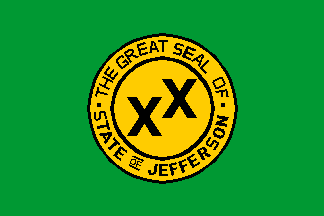
In the 1930's, the State of Jefferson movement came into being and is to date, the best known of such movements in the
region. On the surface, that movement appeared to be a drive to tear SW Oregon and Northern California away from California
and Oregon. As this is historically a depressed area), many locals placed the blame on the governments of Salem and Sacramento.
For that reason, a flag bearing two X's and a gold pan was adopted. The two X's represented the so-called "double crosses"
from Sacramento and Salem. Though that is the State of Jefferson movement on the surface, many of those who organized it actually
saw that the problems in "Jefferson" actually stemmed from the federal government and those people saw Jefferson statehood
as a stepping stone to eventually breaking free from U.S. rule altogether. During 1940 and 1941, organizers attracted massive
media attention by arming themselves and blockading Highway 99 to the south of Yreka where they collected tolls from motorists
and passed out proclamations of independence. When a California Highway Patrolman turned up on the scene, he was told to "get
down the road back to California". And they almost succeeded in their goal, with local representatives scheduled to meet with
Congress on December 8th, 1941. As a result of Pearl Harbor on December 7th, the issue was tabled and after Japanese firebombs
exploded in Oregon, killing several people, the entire movement faded away to support the war. On that note, there is today,
a new State of Jefferson, but the emphasis seems to be completely on statehood and is of a much more conservative brand than
that previously.
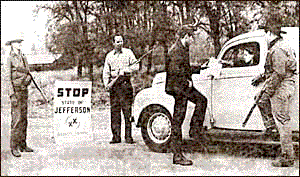
But, once again, in 1956, groups from Cave Junction and Dunsmuir wreaked major havoc on the state and national level
by threatening to tear Southwestern Oregon and Northern California from their respective state rulers to form the "State of
Shasta". Several of the organizers involved took it one step further and threatened the federal government with armed resistance
unless certain demands were met. Unfortunately, the organizers quickly caved in when both states offered to meet some of their
demands.
Over the past few centuries of written history in the region there has been many planned commuinties established
and the rise of alternative economic and socio-political organizations.
One of the earliest of the planned communities
was the Aurora Colony near Wilsonville, Oregon. In the 1850s Dr. William Keil, a Prussian immigrant, resettled his movement
from its original Bethel Colony in Missouri west to the Pacific NorthWest. The original colony resettled at first near Grays
Habour, Washington, but after a long rainy winter resettled in the Willamette Valley. The Aurora Colony was very successful
until dissolvement in 1883 ten years after Keil's death. The colony was a Christian cooperative mostly of German-speaking
immigrants. Keil's basic beliefs was in the Golden Rule and "from each according to his ability, to each according to his
need." The Christian communalism was based on the passage in Acts 2: 44-45: "And all who believed were together and had all
things in common and they sold their possessions and goods and distributed them to all, as any had need."
In 1897
another communal based colony settled in the Puget Sound. This was a gathering of socialists, cooperativists and other workers-focused
activists. Their colony would be christened Equality and would be a socialist/cooperativist experiment. One of the Washington
State newspapers catched the movement as it began to settle in Skagit county:
"St. Louis in 1896 was the theater of
a movement destined to have an effect on the history of the State of Washington. The Populist Convention held there split
into three parts: one went with Bryan, one Nominated Weaver, and one plunged for a demonstration of the worth of socialism
through co-operative colonies??.The Brotherhood of Co-operative Commonwealth was organized in Maine on a national and even
international scale."
"Its objective was to move all the socialists into one state, develop co-operative colonies
and eventually capture the state politically for socialism. The State of Washington was chosen and a site in Skagit (County)
was selected for the first experiment. . . . The Brotherhood of the Co-operative Commonwealth put up $10,000 initial capital,
collected from all over the country in amounts from dimes to hundreds of dollars . . ."
Around the turn of the 20th
century many European immigrants resettled in the Pacific NorthWest. Most were drawn by the timber and fishing industries
as well as a landscape that often reminded them of their homelands. Many of these immigrants left their European homelands
during times of chaotic industrial and revolutionary upheaval. The logging camps, fisheries and factories became overwhelmed
with Finns, South Slavs, Italians, Greeks, Germans, Swedes and other Europeans seeking a new beginning or just survival. The
famous union orginization called the International Workers of the World (the IWW or Wobblies) swelled in its membership. This
demographic change was present all along the Pacific coastline including California, Oregon, Washington, British Columbia
and Alaska as well as the interior of the Pacific NorthWest.
The influx of unionists, socialists and other "left"
movements gave the Pacific NorthWest a very distinct political and socially minded characteristic. There is a famous story
that in 1936 the Postmaster General James Farley toasted President Roosevelt (FDR) with the statement to the "...forty-seven
states in the Union, and the Soviet of Washington."

|